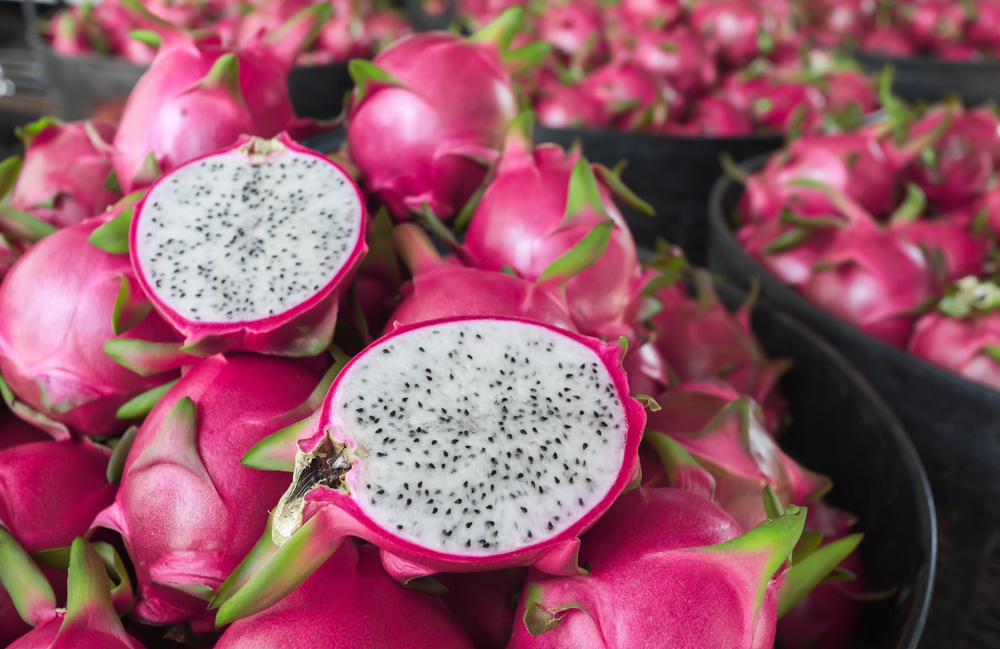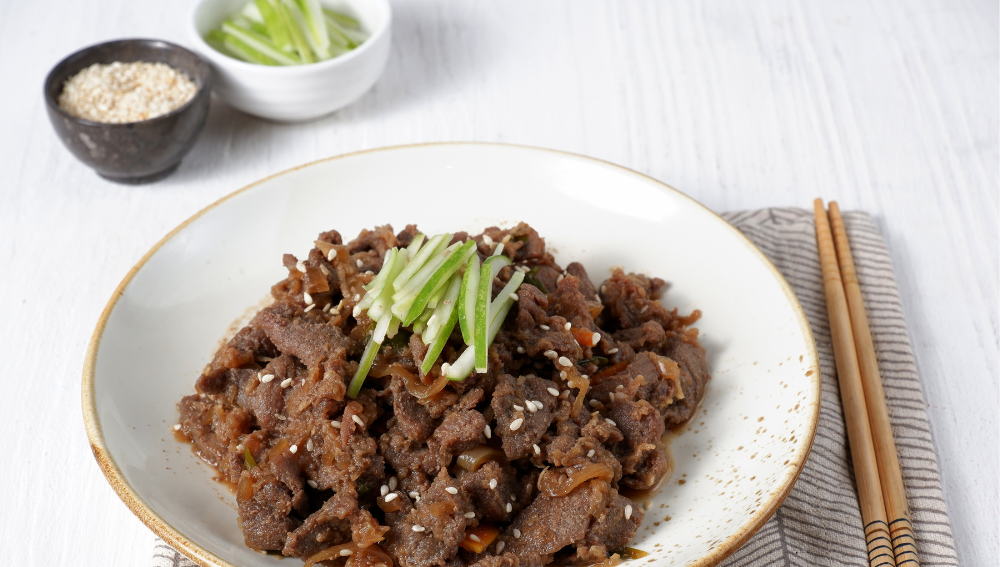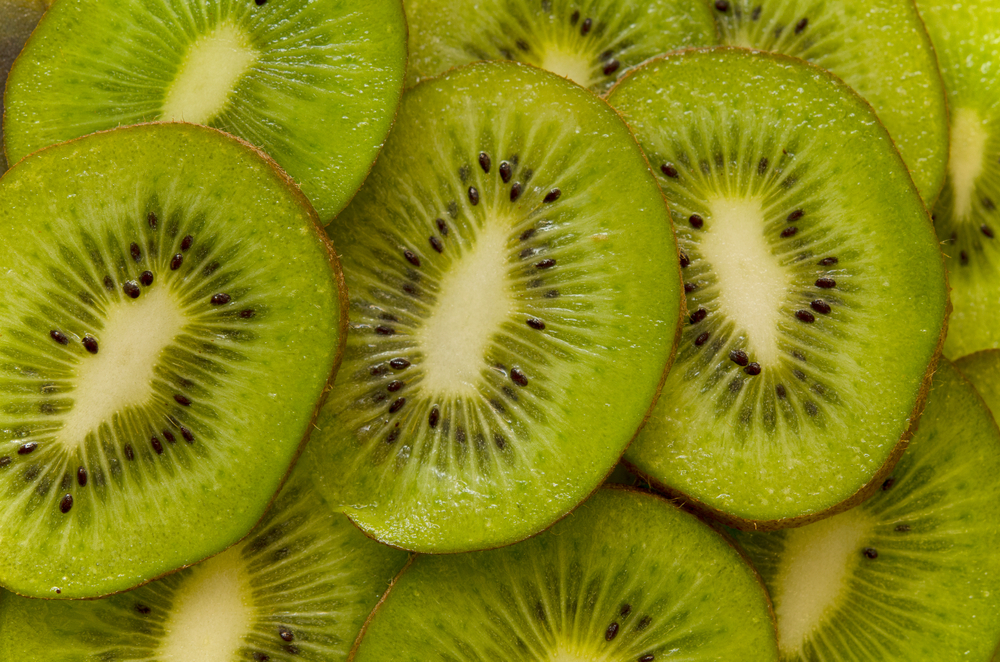Dragon fruit, also known as pitaya or pitahaya, is a tropical fruit that has gained popularity in recent years due to its unique appearance and potential health benefits.
While many people are drawn to dragon fruit for its vibrant colors and striking appearance, others are curious about its taste and texture. In this article, we will explore the flavor profile of dragon fruit and what you can expect when you take a bite.
Dragon fruit has a mild, sweet taste that has been described as a cross between a pear and a kiwi. The texture of the fruit is soft and juicy, similar to a ripe kiwi. The flavor of dragon fruit can vary depending on the variety and ripeness of the fruit.
Under-ripe dragon fruit may have a slightly sour taste, while overripe fruit can be overly sweet and mushy. Despite its unique appearance, dragon fruit is a versatile fruit that can be used in a variety of dishes and recipes.
Key Takeaways
- Dragon fruit has a mild, sweet taste that is often compared to a combination of pear and kiwi.
- The texture of dragon fruit is soft and juicy, similar to a ripe kiwi.
- Dragon fruit can vary in flavor depending on the variety and ripeness of the fruit.
What is Dragon Fruit
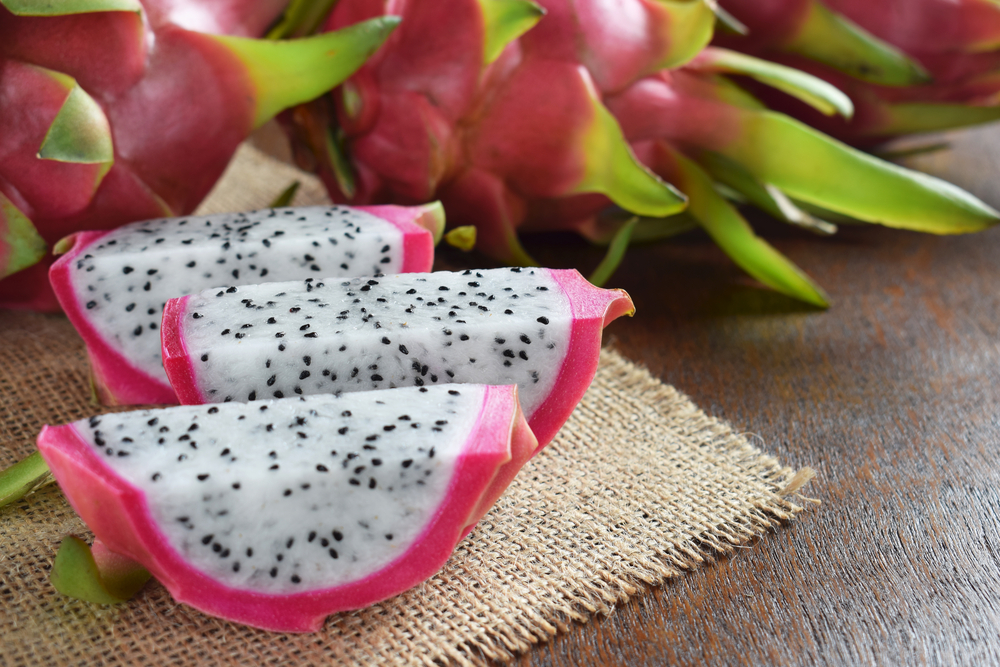
Dragon fruit, also known as pitaya, is a tropical fruit that comes from the cactus family. It is native to Central and South America, but is also grown in Mexico, Southeast Asia, and Vietnam.
The fruit comes from the Hylocereus and Selenicereus cactus plants, which are known for their vibrant and unique appearance.
Dragon fruit has a distinctive appearance that makes it easily recognizable. It has a bright pink or yellow outer skin, with green scales that resemble a dragon’s skin.
The inside of the fruit is white or pink, with small black seeds scattered throughout the flesh.
The fruit has a mildly sweet taste that is often compared to a blend of pear and kiwi. It has a soft texture similar to a ripe kiwi, and is often used in smoothies, salads, and other dishes as a flavorful and nutritious ingredient.
Dragon fruit is a good source of several nutrients, including vitamin C, iron, and fiber. It is also low in calories and fat, making it a healthy addition to any diet.
Overall, dragon fruit is a unique and delicious tropical fruit that is enjoyed by many around the world.
Visual Description of Dragon Fruit
Dragon fruit, also known as pitaya, is a tropical fruit that has a unique appearance. It is oval-shaped and can range in size from small to large.
The fruit has a bright pink or yellow skin with green scales on the outside. The skin of the fruit is thin and easy to peel off. The inside of the fruit is filled with small black seeds that are edible and surrounded by juicy flesh.
There are several varieties of dragon fruit, each with its own distinct appearance. The most common varieties are pink, red, and yellow dragon fruit.
Pink dragon fruit has a bright pink skin with green scales, while red dragon fruit has a deep red skin with green scales. Yellow dragon fruit has a yellow skin with green scales.
The flesh of the dragon fruit can be either white or red, depending on the variety. White-fleshed dragon fruit has a mild, slightly sweet flavor with a crunchy texture. Red-fleshed dragon fruit has a sweeter, juicier flavor with a softer texture.
The seeds of the dragon fruit are small and black, and are edible. They add a slight crunch to the fruit and are a good source of fiber.
Overall, dragon fruit has a visually striking appearance with its bright colors and unique texture. Its taste is mild but refreshing, making it a popular choice for smoothies and fruit salads.
Taste and Texture of Dragon Fruit
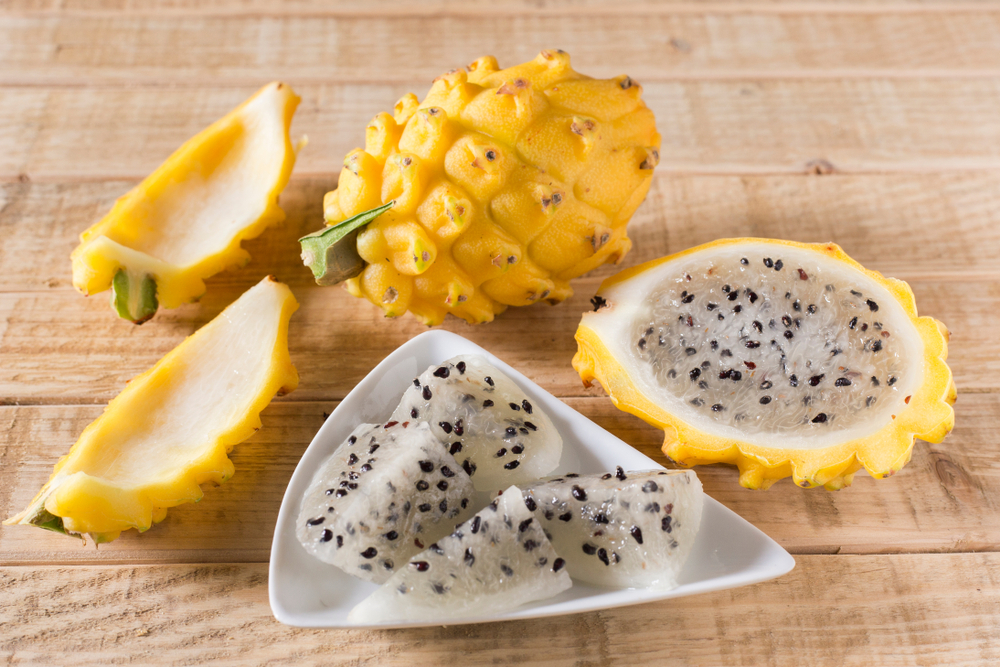
Dragon fruit is a tropical fruit that is known for its unique appearance and taste. The fruit is typically oval-shaped and has a bright pink or yellow skin with green scales that resemble a dragon’s skin.
The flesh of the fruit is white with small black seeds and has a mild, sweet flavor.
When ripe, dragon fruit has a texture that is similar to a ripe kiwi or pear. The flesh is juicy and soft, with a slight crunch from the seeds.
The flavor of the fruit is often described as a blend of pear and kiwi, with hints of strawberry pear, melon, and apples.
Dragon fruit is a popular ingredient in smoothies, and its creamy texture makes it a great addition to yogurt or cereal. It can also be used as a topping on pancakes or waffles.
Overall, dragon fruit is a delicious and unique fruit that is worth trying. Its mild, sweet flavor and soft texture make it a great addition to a variety of dishes.
Nutritional Value of Dragon Fruit
Dragon fruit is a low-calorie fruit that is rich in nutrients. It contains a variety of essential vitamins, minerals, and antioxidants that can help support overall health and wellness.
One of the most notable nutritional benefits of dragon fruit is its high fiber content. A 6-ounce serving of dragon fruit contains 5 grams of fiber, which is about 18% of the recommended daily intake.
Fiber is important for maintaining healthy digestion and can help prevent constipation and other digestive issues.
Dragon fruit is also a good source of antioxidants, which are compounds that help protect the body against damage from harmful molecules called free radicals.
Antioxidants can help reduce the risk of chronic diseases like heart disease, cancer, and Alzheimer’s disease.
In addition to fiber and antioxidants, dragon fruit is also a good source of vitamin C, which is important for immune function and skin health. A 6-ounce serving of dragon fruit contains about 4.25mg of vitamin C.
Dragon fruit also contains iron, which is important for maintaining healthy blood cells and preventing anemia. It also contains a variety of other vitamins and minerals, including magnesium, calcium, and protein.
Overall, dragon fruit is a nutritious and delicious fruit that can be a great addition to a healthy diet.
Health Benefits of Dragon Fruit
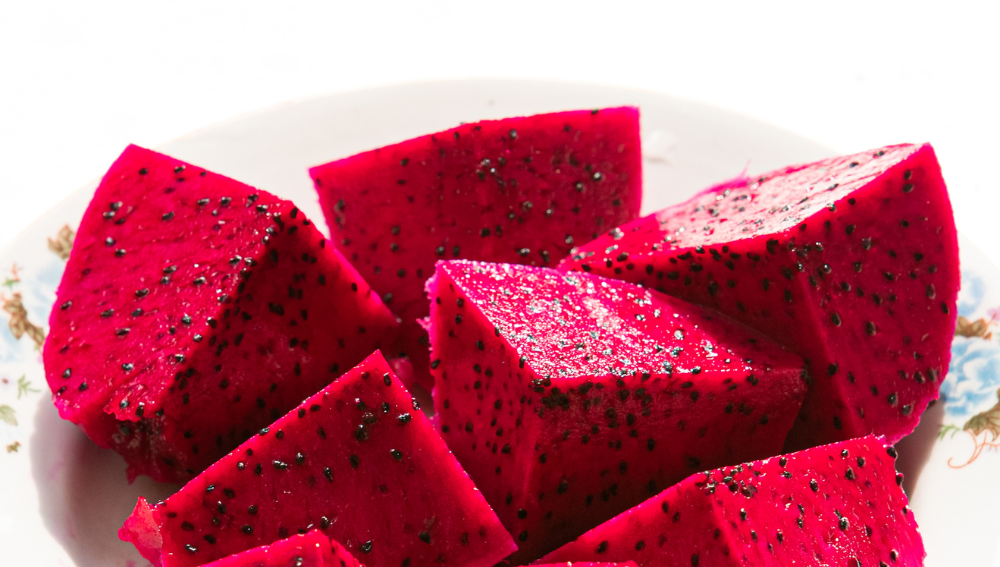
Dragon fruit is a tropical fruit that is not only low in calories but also packed with essential vitamins, minerals, and dietary fiber. Here are some of the health benefits of dragon fruit:
- Boosts Immune System: Dragon fruit is rich in vitamin C, which helps to boost the immune system and fight off infections. It also contains antioxidants that protect the body from free radicals.
- Improves Digestion: The high fiber content in dragon fruit can help improve digestion and promote regular bowel movements. It also contains prebiotics that help to promote the growth of healthy gut bacteria.
- Lowers Cholesterol: Dragon fruit has been shown to have cholesterol-lowering effects, which can help to reduce the risk of heart disease. It contains flavonoids and other compounds that can help to lower LDL (bad) cholesterol levels.
- Regulates Blood Sugar: Dragon fruit may help to regulate blood sugar levels, making it a good choice for people with diabetes. It contains fiber and antioxidants that can help to slow down the absorption of sugar in the bloodstream.
- May Help Fight the Flu: Dragon fruit contains compounds that have antiviral properties, which may help to fight off the flu and other viral infections.
Overall, dragon fruit is a nutritious and healthy fruit that can provide a range of health benefits. Incorporating it into your diet can help to improve your overall health and well-being.
How to Choose and Use Dragon Fruit
Choosing a ripe dragon fruit is essential to ensure that it has the right texture and flavor. Here are some tips on how to select and use dragon fruit:
- Examine the outer skin of the dragon fruit. A ripe dragon fruit should be evenly colored, devoid of bruises and knife marks, and the same color all over. Splotchy skin could be a sign that the fruit is overripe.
- Use a sharp knife to cut the fruit in half lengthwise. The flesh of the dragon fruit should be white, with black seeds scattered throughout. If the flesh is brown or yellow, the fruit is likely overripe and should be avoided.
- Slice the fruit into thin wedges or scoop out the flesh with a spoon. The flesh of the dragon fruit is sweet and creamy yet crunchy, making it a great addition to salads, smoothies, and desserts.
- Dragon fruit is also a popular ingredient in many Asian cuisines. It can be used to make jams, sauces, and even wine.
Overall, dragon fruit is a versatile and delicious fruit that is easy to prepare and enjoy. With a little bit of knowledge on how to choose and use it, anyone can incorporate this exotic fruit into their diet.
Incorporating Dragon Fruit into your Diet

Dragon fruit is a versatile fruit that can be incorporated into various dishes and recipes. Here are some ideas on how to include it in your diet:
As a Spoon Fruit
One of the simplest ways to enjoy dragon fruit is by scooping out the flesh with a spoon. This works best for ripe dragon fruit that has a soft and juicy texture.
Simply cut the fruit in half and scoop out the flesh with a spoon. Dragon fruit can be eaten on its own or combined with other fruits like berries or kiwis.
In Smoothies and Smoothie Bowls
Dragon fruit is a popular ingredient in smoothies and smoothie bowls due to its sweet and refreshing taste. To make a dragon fruit smoothie, blend together dragon fruit chunks, yogurt, almond milk, and honey. For a thicker consistency, add some ice cubes or frozen banana slices.
To make a smoothie bowl, pour the smoothie into a bowl and top it with granola, sliced fruits, and chia seeds.
In Salads and Fruit Salads
Dragon fruit can add a pop of color and flavor to salads and fruit salads. Simply slice the fruit into small pieces and toss it with other fruits and vegetables like lettuce, cucumber, and avocado. For a dressing, mix together lime juice, honey, and olive oil.
In Salsas and Cocktails
Dragon fruit can also be used to make salsas and cocktails. For a dragon fruit salsa, combine diced dragon fruit, red onion, jalapeno, cilantro, and lime juice.
Serve it with tortilla chips or as a topping for grilled fish or chicken. For a dragon fruit cocktail, muddle together dragon fruit chunks, mint leaves, lime juice, and simple syrup. Add some vodka or rum and top it off with soda water.
Overall, dragon fruit is a delicious and nutritious fruit that can be enjoyed in many different ways. Incorporate it into your diet for a sweet and refreshing addition to your meals.
Storage and Shipping of Dragon Fruit
Dragon fruit is a delicate fruit that requires careful handling during storage and shipping to maintain its quality and freshness. Here are some tips on how to store and ship dragon fruit:
Storage
Dragon fruit should be stored in an airtight container in the refrigerator to keep it fresh for up to five days. The fruit should be washed and dried thoroughly before storage.
It is important to avoid storing dragon fruit with other fruits that produce ethylene gas, such as apples and bananas, as this can cause the fruit to ripen and spoil quickly.
Shipping
When shipping dragon fruit, it is important to protect the fruit from pressure and damage during transit. The fruit should be packed in a sturdy box with enough padding to prevent it from being crushed or bruised.
The box should be labeled as “fragile” to alert handlers to handle it with care.
Dragon fruit should be shipped using overnight or express delivery to ensure that it arrives at its destination fresh and in good condition.
It is also important to check the weather forecast before shipping dragon fruit, as extreme temperatures can damage the fruit during transit.
Rind
The rind of dragon fruit is thin and delicate, and it can be easily damaged during storage and shipping. It is important to handle the fruit with care to avoid damaging the rind, which can lead to spoilage and loss of quality.
In conclusion, proper storage and shipping are crucial for maintaining the quality and freshness of dragon fruit. By following these tips, you can ensure that your dragon fruit arrives at its destination in good condition and ready to be enjoyed.
Dragon Fruit in Folklore and Culture
Dragon fruit has been a part of folklore and culture in many countries where it is grown. In Vietnam, the fruit is known as “thanh long,” which translates to “green dragon,” and it is believed to bring good luck and fortune. It is often served at weddings and other special occasions.
In Chinese culture, the fruit is associated with the dragon, a symbol of strength and good fortune. It is often given as a gift during the Chinese New Year to wish the recipient prosperity and success.
The cactus on which the dragon fruit grows is also revered in some cultures. In Mexican folklore, the cactus is believed to have healing properties and is used in traditional medicine.
Similarly, in South American cultures, the cactus is seen as a symbol of resilience and perseverance.
Overall, dragon fruit and its cactus have played important roles in the folklore and culture of many countries. Whether it is seen as a symbol of good fortune or healing properties, the fruit and its cactus continue to be an important part of many traditions.
Scientific Studies on Dragon Fruit
Dragon fruit has been the subject of several scientific studies due to its potential health benefits. Here are some of the findings:
Antioxidant properties
Dragon fruit is rich in antioxidants, which are compounds that help protect the body against damage from harmful molecules called free radicals.
A study published in the Journal of Food Science and Technology found that dragon fruit had higher antioxidant activity than other tropical fruits such as papaya and pineapple.
Potential antibacterial effects
Dragon fruit has been found to have potential antibacterial effects against several strains of bacteria. A study published in the Journal of Agricultural and Food Chemistry found that extracts from dragon fruit had antibacterial activity against Staphylococcus aureus and Escherichia coli.
Good for gut health
Dragon fruit is a good source of fiber, which is important for maintaining a healthy digestive system. A study published in the journal Nutrients found that consuming dragon fruit improved gut health in mice by increasing the abundance of beneficial gut bacteria.
Overall, while more research is needed, these studies suggest that dragon fruit may have potential health benefits, including antioxidant properties, antibacterial effects, and positive effects on gut health.
Frequently Asked Questions
How can you describe the taste of dragon fruit?
Dragon fruit has a very mild, slightly sweet flavor that is often compared to a cross between a pear and a watermelon. Its texture is similar to that of a kiwi, with small black seeds throughout the flesh.
What are some ways to make dragon fruit taste better?
One way to enhance the flavor of dragon fruit is to pair it with other fruits, such as strawberries or mangoes, in a fruit salad or smoothie. Another option is to sprinkle it with a bit of lime juice or honey to add some extra sweetness.
Is dragon fruit sweet or sour?
Dragon fruit is generally considered to be sweet, but the level of sweetness can vary depending on the ripeness of the fruit.
What fruits are similar to dragon fruit in taste?
Fruits that are often compared to dragon fruit in taste include kiwi, pear, and watermelon. However, dragon fruit has a unique flavor that is difficult to replicate.
Can overripe dragon fruit still be eaten?
While overripe dragon fruit may not look as appealing as a fresh fruit, it is still safe to eat as long as there are no signs of mold or spoilage. The texture may be softer and the flavor may be slightly more sour.
Is dragon fruit good for your health?
Dragon fruit is a good source of fiber, vitamin C, and antioxidants. It is also low in calories and fat, making it a healthy addition to any diet.
However, it is important to note that no single food can provide all the nutrients your body needs, so it is important to eat a varied and balanced diet.


